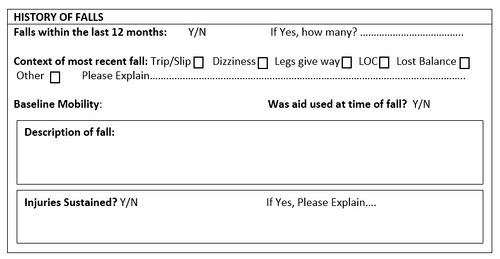The Main Principles Of Dementia Fall Risk
The Main Principles Of Dementia Fall Risk
Blog Article
The Best Guide To Dementia Fall Risk
Table of ContentsSome Known Factual Statements About Dementia Fall Risk The Best Strategy To Use For Dementia Fall RiskExamine This Report about Dementia Fall RiskThe Ultimate Guide To Dementia Fall Risk
A fall risk assessment checks to see how most likely it is that you will fall. It is mainly provided for older grownups. The evaluation typically consists of: This includes a series of concerns concerning your general health and if you have actually had previous falls or issues with balance, standing, and/or walking. These tools test your stamina, balance, and stride (the means you stroll).STEADI includes screening, examining, and intervention. Interventions are recommendations that might lower your threat of falling. STEADI consists of 3 steps: you for your threat of succumbing to your threat factors that can be boosted to attempt to avoid falls (for example, balance problems, damaged vision) to minimize your threat of dropping by using efficient techniques (as an example, giving education and learning and resources), you may be asked several questions including: Have you fallen in the previous year? Do you really feel unstable when standing or strolling? Are you fretted about falling?, your company will certainly evaluate your stamina, equilibrium, and stride, making use of the following fall evaluation devices: This examination checks your stride.
If it takes you 12 secs or more, it might imply you are at higher threat for a loss. This test checks stamina and equilibrium.
The positions will certainly obtain more challenging as you go. Stand with your feet side-by-side. Relocate one foot halfway forward, so the instep is touching the huge toe of your various other foot. Move one foot totally before the other, so the toes are touching the heel of your various other foot.
9 Easy Facts About Dementia Fall Risk Described
Many falls happen as a result of numerous adding elements; as a result, handling the risk of falling starts with determining the elements that add to fall danger - Dementia Fall Risk. A few of one of the most appropriate danger variables consist of: History of previous fallsChronic clinical conditionsAcute illnessImpaired stride and balance, reduced extremity weaknessCognitive impairmentChanges in visionCertain risky medicines and polypharmacyEnvironmental aspects can likewise increase the risk for drops, consisting of: Poor lightingUneven or damaged flooringWet or unsafe floorsMissing or harmed hand rails and get hold of barsDamaged or improperly equipped tools, such as beds, wheelchairs, or walkersImproper usage of assistive devicesInadequate supervision of individuals staying in the NF, consisting of those that display aggressive behaviorsA effective loss threat administration program requires a complete medical analysis, with input from all participants of the interdisciplinary group

The treatment plan should likewise include treatments that are system-based, such as those that advertise a safe atmosphere (proper lights, hand rails, get hold of bars, and so on). The effectiveness of the interventions should be evaluated occasionally, and the care plan changed as needed to show changes in the fall risk evaluation. Carrying out a loss risk monitoring system making use of evidence-based finest technique can lower the prevalence of drops in like it the NF, while restricting the potential for fall-related injuries.
Facts About Dementia Fall Risk Revealed
The AGS/BGS guideline recommends screening all adults matured 65 years and older for loss danger every year. This screening consists of asking people whether they have dropped 2 or even more times in the past year or looked for medical focus for a loss, or, if they have not fallen, whether they feel unsteady when walking.
People who have dropped when without injury ought to have their balance and stride reviewed; those with gait or equilibrium problems should get added evaluation. A history of 1 fall without injury and without gait or balance troubles does not necessitate further assessment beyond ongoing yearly loss danger testing. Dementia Fall Risk. A fall risk analysis is needed as component of the Welcome to Medicare assessment

Some Of Dementia Fall Risk
Documenting a drops background is one of the high quality signs for loss prevention and administration. Psychoactive medicines in certain are independent forecasters of drops.
Postural hypotension can often be alleviated by minimizing the dose of blood pressurelowering medications and/or stopping medications that have orthostatic hypotension as a side result. Use above-the-knee assistance tube and copulating the head of the bed raised might additionally lower postural decreases in blood stress. The recommended aspects of a fall-focused physical exam are received Box 1.

A Yank time higher than or equal to 12 secs recommends high loss threat. Being incapable to stand up from a chair of knee elevation without utilizing one's arms indicates raised loss danger.
Report this page